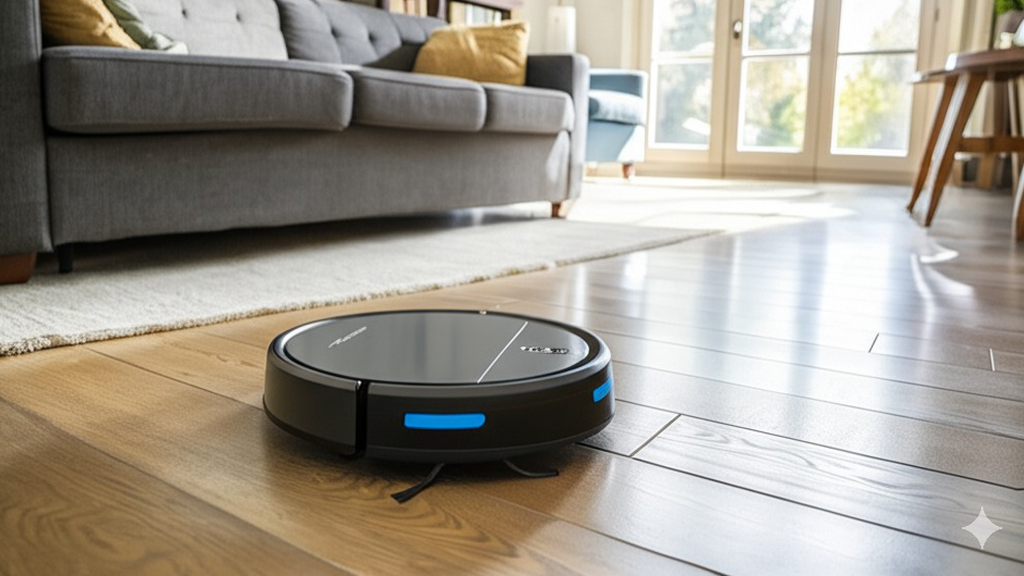
Mastering the Art of Vacuuming Hard Floors with a Robot Cleaner
When I embarked on the journey of maintaining my hard floors in an immaculate state with the help of a robot cleaner, I found myself engulfed by a vast array of choices and configurations. The challenge of vacuuming hard surfaces — be it wood, tile, or stone — diverges significantly from the realm of carpets, necessitating a set of distinctive strategies to unlock the full potential of this modern technology.
Captivating Attention
I vividly recall the moment when my brand-new robot cleaner faltered, unable to reach those pesky corners and leaving a symphony of dust in its wake. It struck me then how imperative it was to arm myself with specialized tips and tricks to truly exploit the capabilities of this innovative device for my hard flooring needs.
Igniting Interest
Through a diligent process of exploration, experimentation, and an unyielding quest for information, I uncovered a wealth of insights that fundamentally reshaped my cleaning routine. Opting for a model equipped with rubberized wheels and soft brushes became essential to safeguard my tiles and wooden floors from unsightly scratches. It was never merely about acquiring the plushest model; it was about recognizing the pivotal features that harmonized with the surfaces in my home.
Fueling Desire
The pivotal moment in this transformation came with my newfound understanding of the importance of advanced navigation and consistent upkeep. Embracing models with sophisticated mapping systems enabled my cleaner to memorize the layout of my residence, deftly steering clear of obstacles and optimizing its cleaning trajectories. By diligently maintaining the sensors and brushes, I have witnessed a remarkable sheen on my floors that I had long thought unattainable.
Driving Action
If you’re like me, navigating the realm of robot cleaners on hard floors, I urge you to adopt these strategies: invest in a model specifically designed for hard surfaces, prioritize routine maintenance, and harness technology that elevates navigation. Believe me, integrating these practices not only streamlined my cleaning process but also bestowed upon me the sparkling floors I had always envisioned. Give these tips a try, and prepare to be astounded by the transformation in your own abode!
Robot cleaners are equally effective on carpets and hard floors.False
Robot cleaners require different strategies for hard surfaces than carpets.
Choosing models with rubberized wheels is ideal for hard floors.True
Rubberized wheels help prevent scratches on wooden and tiled surfaces.
How to Select the Right Robotic Vacuum for Hard Flooring
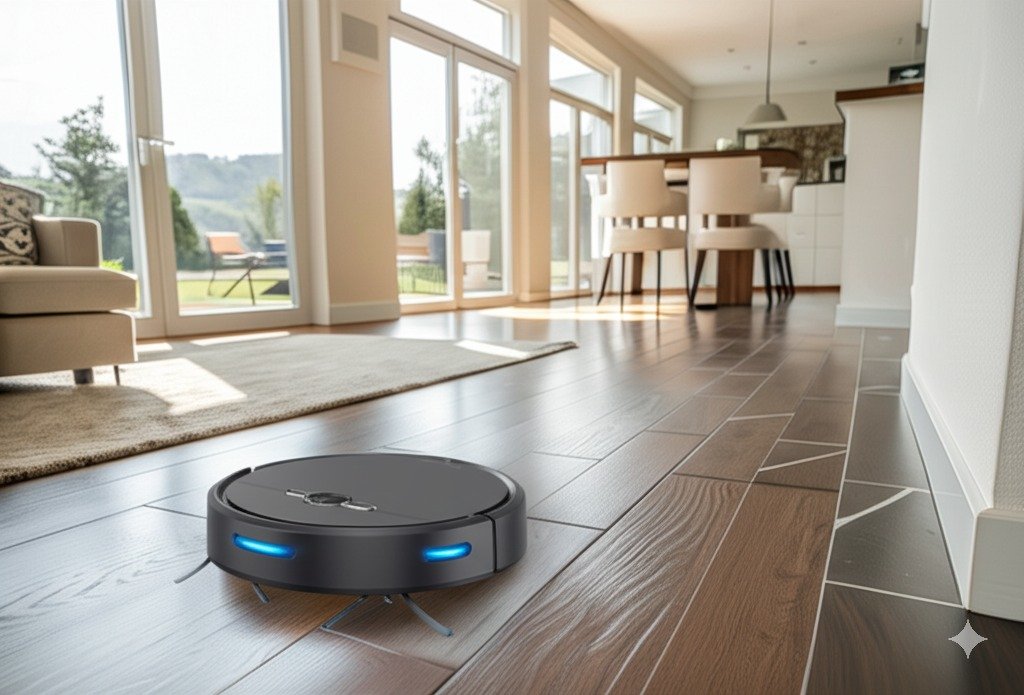
When I embarked on my journey into the world of robotic cleaners for my hard floors, an intriguing blend of excitement and skepticism washed over me. Could this gadget really confront the relentless dust and debris that seemed to have made my floors their permanent residence? To my astonishment, armed with a handful of strategic tips, my robotic vacuum transformed into an invaluable ally in the quest for immaculate surfaces.
A pivotal lesson that emerged from my experience was the necessity of fine-tuning the robot’s settings tailored to various hard floor types. For example, selecting the optimal suction power significantly boosts the cleaner’s efficacy. I discovered that a suction setting ranging between 1500 and 2500 Pa is particularly effective for hard surfaces, facilitating the efficient removal of debris while safeguarding the longevity of the device.
Equally vital was grasping the nuances of the navigation system. My robot deploys SLAM (Simultaneous Localization and Mapping) technology, enabling it to intricately map my living space and diligently address every nook and cranny with remarkable accuracy. Coupled with its automatic brush adjustment feature, I found myself free from the worry of missed spots or potential floor damage due to overzealous pressure.
Moreover, maintaining the robot is a facet that warrants careful consideration. Consistently cleaning the brushes and emptying the dustbin is essential, as it wards off clogs and ensures the machine operates at its optimum level. By adhering to these practices, I’ve successfully maintained my hard floors in splendid condition, all while significantly reducing my own time and effort dedicated to cleaning.
For anyone contemplating the acquisition of a robotic cleaner for hard floors, I trust these insights will prove beneficial. Implement these strategies, and I am confident you will witness a remarkable enhancement, both in the cleanliness of your floors and the convenience integrated into your daily routines.
What Cleaning Solutions Are Best for Hard Flooring?
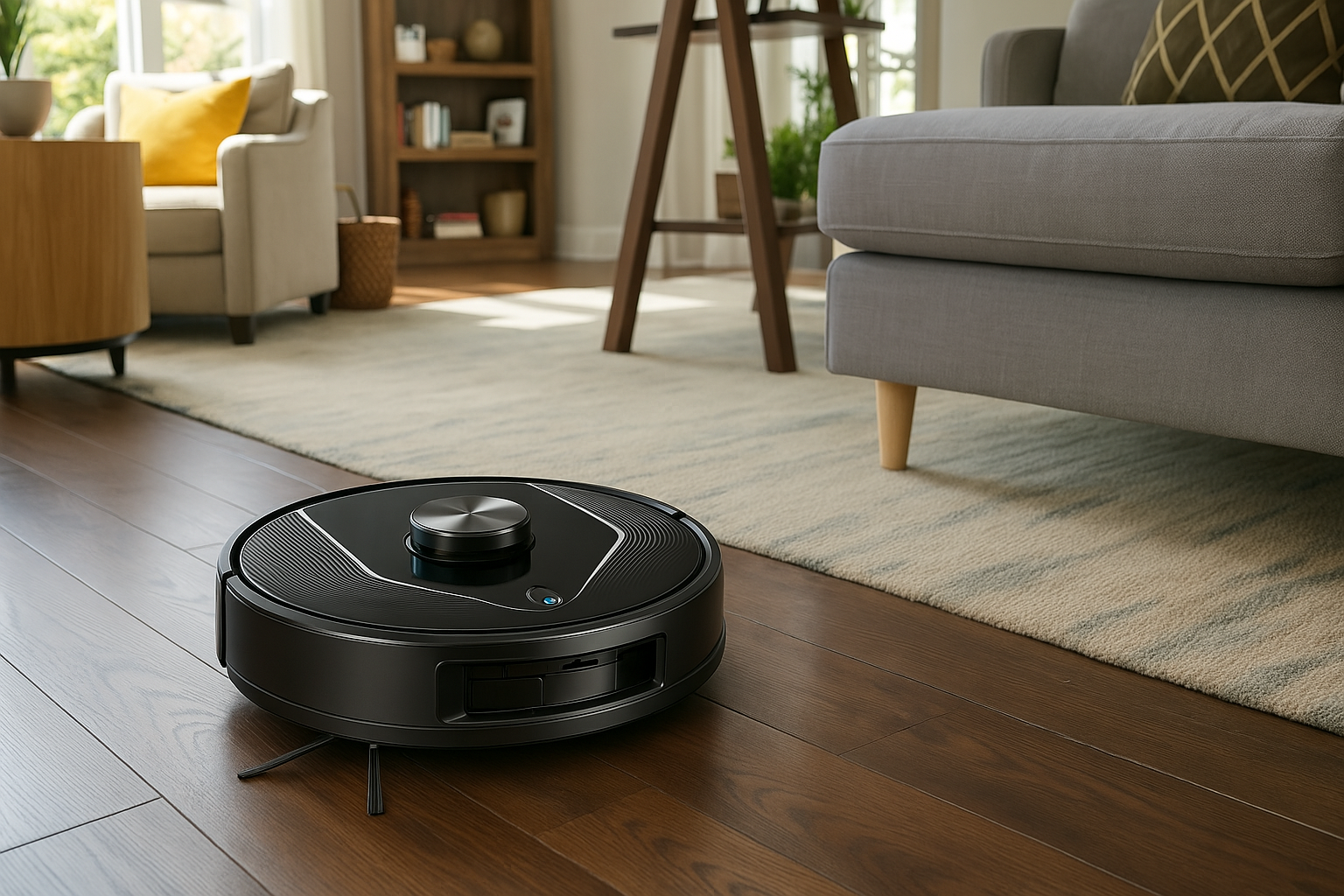
When I first welcomed a robotic cleaner into my home, I found myself somewhat daunted by the prospect of maintaining the immaculate sheen of my hard floors. However, through a journey marked by experimentation and insight, I unearthed a collection of invaluable tips and tricks that transform the sometimes daunting task of robotic vacuuming into an effortless endeavor!
Let’s begin with an important realization: not all hard surfaces are made equal, be it warm hardwood, sleek tiles, or durable laminate. Understanding the unique requirements of each flooring type has proven indispensable. For example, I discovered that fine-tuning the vacuum settings helps prevent unsightly scratches while ensuring that every speck of dust and debris is effectively captured. Through my explorations with various robot models, it became clear how vital it is to harmonize suction strength and brush style with the specific traits of my floors.
One particularly enlightening revelation was the power of scheduling my vacuum’s operation. By programming it to tackle cleaning sessions while I’m out, I’ve achieved a level of consistent cleanliness that requires minimal effort from me. Moreover, keeping the sensors pristine and regularly updating the software of my robotic companion has significantly augmented its overall performance.
In essence, the secret to successful robotic cleaning lies in comprehending the particular needs of your flooring and harmonizing them with the capabilities of your robot cleaner. Implement these strategies, and you’ll soon witness your floors gleam with the same brilliance as mine!
How to Optimize Navigation and Avoid Obstacles?
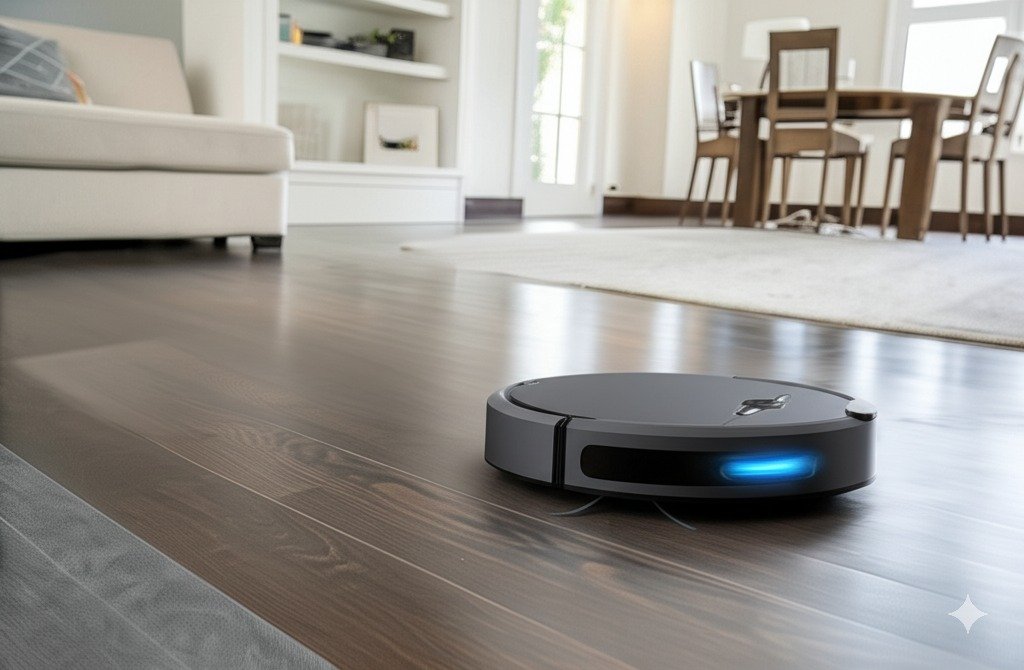
When I first welcomed a robot cleaner into my home, I felt a whirlwind of excitement intertwined with a hint of anxiety. With hardwood floors beneath my feet and a couple of furry companions racing around, I couldn’t shake the nagging question: how adept would this little technological marvel be at its task? My journey unveiled intriguing insights alongside actionable strategies to amplify its efficiency on hard flooring.
One of the initial observations that piqued my curiosity was the robot’s navigation and its ability to sidestep obstacles. In the early days, it had a tendency to bounce off furniture like a pinball. However, I soon stumbled upon a series of fantastic strategies that transformed its performance. By methodically decluttering the space and ensuring that cords didn’t lie in wait on the floor, I was amazed at the marked enhancement in its movement fluidity. Furthermore, a simple yet transformative habit emerged: regularly cleaning the sensors. This routine task dramatically sharpened its pathfinding capabilities, a small adjustment yielding substantial returns.
As I delved deeper, what ignited my intrigue was tinkering with the manual settings. Many of these robotic cleaners come equipped with learning algorithms that enable you to tailor cleaning routes and schedules to your liking. It felt akin to imparting knowledge of my home’s distinctive layout to the machine, significantly boosting its cleaning efficacy. Witnessing this diminutive device adapt to my environment was captivating, leaving me curious about the depths of its potential.
Driven by the aspiration to refine this cleaning process, I embarked on trying various configurations. For instance, scheduling cleans for moments when the house was less cluttered worked wonders for performance. Each adjustment gradually edged me closer to achieving optimal functioning on hardwood surfaces. Now, I’m genuinely enthusiastic about sharing these findings to help others attain the same level of simplicity and effectiveness.
If the idea of enhancing your robot cleaner’s performance on hard floors has sparked your curiosity, I wholeheartedly encourage you to implement these strategies. The transformation can be nothing short of revolutionary for both cleanliness and convenience in your home. My hope is that this guidance proves as beneficial for you as it has been for me.
What Are the Key Maintenance Tips for Robotic Vacuums?

The first time I set my robot vacuum cleaner to work on my hard floors, I assumed that simply hitting the “Start” button would effortlessly do the trick. However, reality painted a different picture entirely. I quickly realized that to truly harness its capabilities, I needed to grasp a few essential techniques. This revelation sparked my journey into the realm of robotic maintenance.
Through conversations with friends, I unearthed a common theme: many overlook the critical importance of regular upkeep. This insight reinforced my desire to share my experiences. For instance, routinely emptying the dust bin and cleaning the brushes after each use is paramount for maintaining optimal performance. Furthermore, dedicating some time each month to deep clean the sensors and underside significantly boosts the robot’s efficiency.
Effective floor cleaning requires more than just advanced technology; meticulous daily maintenance plays an equally vital role. This understanding hit home, impressing upon me the necessity of cultivating an ongoing maintenance routine to fully unlock the potential of my robot vacuum. I genuinely hope my experiences resonate with you. Try weaving these strategies into your cleaning regimen; you’ll undoubtedly witness remarkable results. If you haven’t yet embarked on this journey, now is the perfect moment to start. I wholeheartedly encourage you to implement these practices, extending your machine’s lifespan and allowing you to relish in the comfort of a spotless home.
How to Implement Multi-Floor Cleaning Strategies?
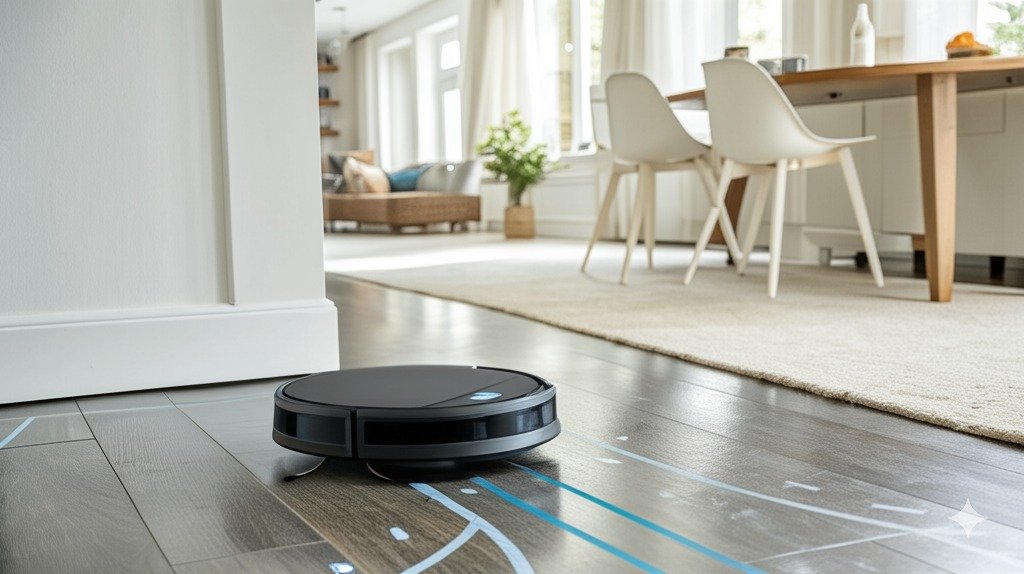
Upon embarking on my journey with a robot cleaner designed for hard floors, I was taken aback by how swiftly it ingrained itself into my cleaning regimen. However, let’s face it: optimizing the utility of robotic cleaners is not as straightforward as it appears. Thus, I feel compelled to share some invaluable tips and strategies I’ve gleaned that can elevate efficiency and keep your floors immaculate.
One transformative revelation for me was uncovering the mapping prowess of my robot cleaner. It felt akin to unlocking a concealed superpower! By establishing definitive boundaries and gaining insights into the cleaner’s navigation across various spaces, I ensured that every inch was accounted for. Moreover, committing to routine maintenance—specifically cleaning the robot’s brushes and sensors—proved vital for sustaining its peak performance. It’s astonishing how a bit of upkeep can yield vast improvements!
Additionally, I delved into the different cleaning modes available. For anyone who, like myself, may have overlooked exploring the myriad options, I highly recommend adjusting the suction settings tailored to each floor type for optimal cleaning efficacy. This adjustment yielded significant benefits, particularly in areas subjected to heavier foot traffic.
To distill my wisdom succinctly: “By harnessing a robot cleaner’s mapping capabilities, adhering to routine maintenance, and fine-tuning mode settings, one can achieve a thorough and efficient clean on hard surfaces.” I trust these insights will be as beneficial to you as they have been for me. Give these strategies a whirl, and I am confident you will witness a marked enhancement in your cleaning outcomes!
Conclusion
In conclusion, mastering the art of vacuuming hard floors with a robot cleaner involves a strategic approach that takes into account the unique characteristics of different surfaces. From selecting the right model with features like rubberized wheels and advanced navigation systems to implementing a consistent maintenance routine, every step significantly enhances cleaning efficiency. Understanding these key aspects allows homeowners to leverage the full potential of robotic technology in maintaining immaculate homes.
As you consider integrating a robotic vacuum into your cleaning regimen, remember to personalize your approach based on specific flooring types and individual preferences. By employing effective strategies like tailored suction power and optimizing navigation through decluttering and sensor maintenance, you can achieve outstanding results. Embrace these insights and elevate your cleaning experience; the transformation of your hard floors awaits!

